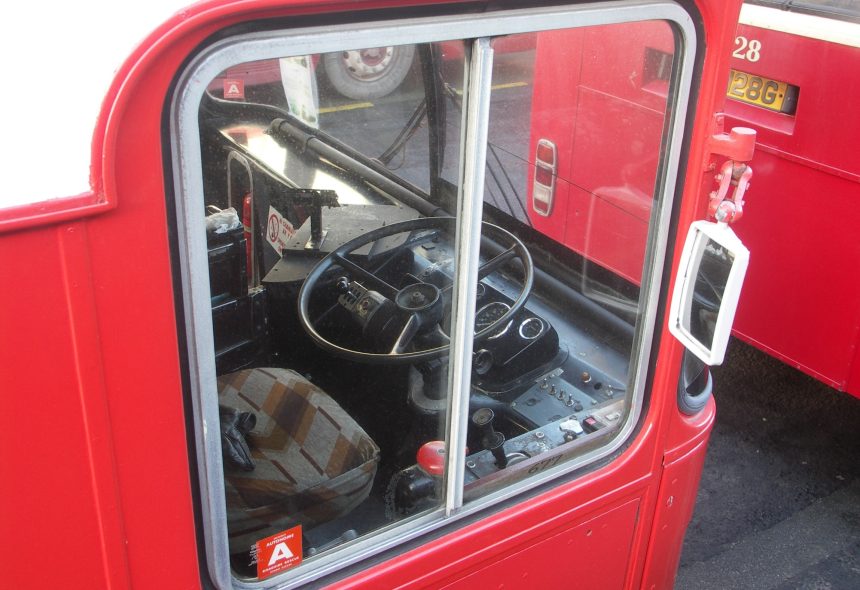The main character from the 1970s British sitcom On the Buses, a driver named Stan, was always trying to get off work with various hare-brained schemes. Hardly surprisingly, when you learn that during the same era, work-related health problems often forced bus drivers to quit the job long before retirement age.
30 years ago, drivers not only had to drive the bus and navigate heavy traffic, but they were also responsible for tasks like supervising passenger loading and unloading, selling tickets, and providing travellers with various kinds of information, and all while sitting in an often ill-fitting workstation.
Numerous studies have shown that this combination of psychological and physical stresses cut many a driver’s career short.
Since then, bus design has changed significantly. Drivers are now supported by technology. For example, as a passenger today, you can tap your travel card or use contactless payment to buy a ticket, enjoy live updates on a digital screen, and even charge your devices via USB points.
Modern buses are a world away from their 1990s counterparts. But it seems that much of the development has focused on passengers. What about drivers?
According to a 2024 survey by union RMT, drivers are still suffering at work. In fact, four out of five drivers (78%) say that their occupation caused them musculoskeletal complaints such as back, shoulder or neck pain.
If you ask them what the problem is, 19 out of 20 drivers (95%) say that the cab could be designed in a more ergonomic way to reduce the risk of discomfort and pain.
It is no wonder the industry faces a staff shortage. The government is even proposing a relaxation of rules on 18- and 19-year-old drivers to bolster the workforce, but what is the sector doing to make the role more attractive?
Get comfortable
Manufacturers must not be laid back when it comes to driver comfort. Workplaces in general must be comfortable to improve wellbeing – but with passenger safety at risk if a driver becomes distracted, it is especially important.
Seat design, for example, has evolved over the years to improve conditions for drivers. To reduce fatigue and increase comfort, seats are now fully adjustable and sometimes heated, insulated from vibration and with lumbar support. Controls are also more ergonomic, with various switches grouped according to frequency of use and with easy reach when driving.
Improved adjustability
One cab feature that is often overlooked is the steering column. Unlike domestic cars, which usually have just one or two drivers, buses are driven by multiple different people and so frequently require adjustments to the cab settings.
The one-size-fits-all approach no longer applies. Today, most steering columns are adjustable to some degree. However, the RMT survey results suggest that drivers still find themselves forced into awkward postures and that there is room for development.

It may be that a greater range of adjustability would help. For example, a tilting head steering column that allows the driver to fully customise both the reach and the angle of the steering wheel might help to ensure a comfortable and ergonomic driving posture that minimises shoulder, back and neck strain.
Additionally, drivers who are pressed for time at the beginning of a shift will benefit from an electric column with a memory function, so that the steering wheel instantly adjusts to a driver’s favourite position at the touch of a button.
If connected to the seating, the seat could also adjust in the same way. That would eliminate the need for manual or repeated adjustments every shift, saving valuable time and ensuring maximum ergonomic benefit.
As well as reducing setup time, a column designed to make adjusting the height and angle of the wheel quick and easy – or automatic – would ensure a comfortable posture throughout every shift, reducing the risk of fatigue and discomfort throughout the day.
Safe travels
Initially intended to protect drivers from unruly passengers, the cab in modern buses is often isolated from the rest of the interior via a plexiglass screen.
This proved to be very useful for protecting drivers from illness during the pandemic, and now, dedicated climate control ensures a comfortable working temperature for the driver regardless of passenger cabin conditions.
Some buses feature blind spot monitoring systems combined with lane departure warning and automatic emergency braking, further protecting passengers and assisting drivers. Live information about the vehicle is clearly displayed within easy eyesight of the driver.
Buses are even safer for people outside the vehicle. Zero tailpipe emissions improves urban air quality and reduces pollution.
Although many of the features described above are common in new buses, drivers in some areas are often stuck with much older vehicles. With their more basic cab designs, drivers of those older buses are at greater risk of injury, as the RMT data demonstrates.
Hopefully these buses will soon seem as out of date as some of the riskier jokes from On the Buses, and drivers will no longer be spending so much time recovering from back and neck pain.
Pailton Engineering designs and manufactures steering components and full steering systems for the coach and bus sector. To find out more, visit its website.



























